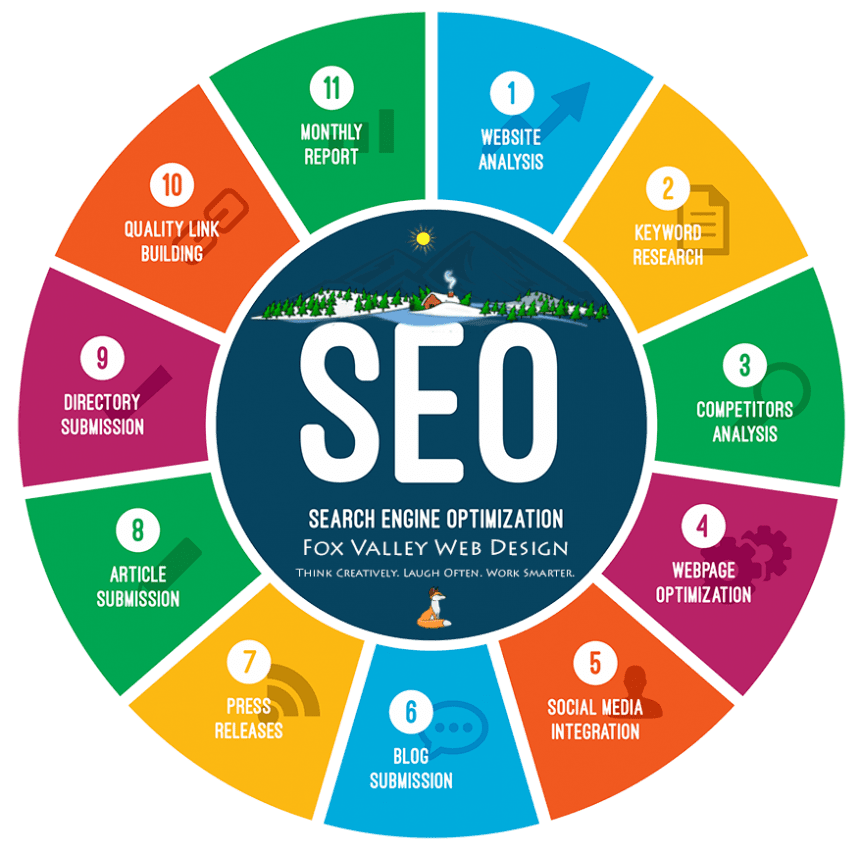Maximising Your Online Presence Through Effective Site Optimization Strategies
Site Optimization: Enhancing Your Online Presence
In the digital age, having a strong online presence is crucial for businesses to succeed. Site optimization plays a key role in ensuring that your website is not only visible to your target audience but also provides a seamless user experience. Let’s explore the importance of site optimization and how it can benefit your online presence.
What is Site Optimization?
Site optimization involves making strategic changes to your website to improve its performance, visibility, and user experience. This includes various techniques such as:
- SEO (Search Engine Optimization): Optimizing your website’s content and structure to rank higher in search engine results.
- Speed Optimization: Ensuring that your site loads quickly to reduce bounce rates and improve user satisfaction.
- Mobile Optimization: Making your website responsive and mobile-friendly for users on smartphones and tablets.
- User Experience (UX) Design: Creating an intuitive and easy-to-navigate interface for visitors.
- Content Optimization: Crafting high-quality, relevant content that engages users and drives traffic.
The Benefits of Site Optimization
Optimizing your site offers numerous benefits, including:
- Improved Search Engine Rankings: Higher visibility in search results leads to increased organic traffic.
- Better User Experience: A well-optimized site enhances user satisfaction and encourages repeat visits.
- Increased Conversions: Optimized websites are more likely to convert visitors into customers or leads.
- Faster Loading Times: Quick page speeds reduce bounce rates and improve overall performance.
- Growth in Online Authority: Quality optimization builds credibility and trust with both users and search engines.
Tips for Effective Site Optimization
To maximise the benefits of site optimization, consider implementing the following strategies:
- Create Quality Content: Publish relevant, engaging content that resonates with your target audience.
- Optimize Metadata: Use descriptive titles, meta descriptions, and tags to improve search engine visibility.
- Simplify Navigation: Ensure easy navigation with clear menus and internal linking structures.
…
7 Essential Tips for Optimising Your Website’s Performance and Visibility
- Optimise images for faster loading times
- Use descriptive meta tags for better search engine visibility
- Ensure responsive design for mobile compatibility
- Minify CSS and JavaScript files to reduce page load times
- Implement caching to speed up website performance
- Optimise server response time by reducing unnecessary scripts or plugins
- Regularly monitor and analyse website performance metrics
Optimise images for faster loading times
Optimising images for faster loading times is a crucial aspect of site optimization. By resizing images, compressing file sizes, and using appropriate formats, you can significantly improve the speed at which your website loads. This not only enhances user experience by reducing wait times but also positively impacts your site’s SEO performance, as faster-loading pages are favoured by search engines. Prioritising image optimisation ensures that your website remains efficient and user-friendly, ultimately leading to higher engagement and better overall performance.
Use descriptive meta tags for better search engine visibility
When it comes to site optimization, utilising descriptive meta tags is a crucial strategy for enhancing search engine visibility. By crafting informative and relevant meta titles and descriptions, you provide search engines with valuable information about the content of your web pages. This not only helps search engines understand the context of your site but also entices users to click through to your website by displaying compelling snippets in search results. Effective use of meta tags can significantly improve your website’s discoverability and attract more organic traffic, ultimately contributing to the overall success of your online presence.
Ensure responsive design for mobile compatibility
In the realm of site optimization, a crucial tip is to ensure responsive design for mobile compatibility. With the increasing number of users accessing websites on mobile devices, it is imperative that your site adapts seamlessly to different screen sizes and resolutions. By implementing a responsive design approach, you not only enhance user experience but also improve your site’s visibility in search engine rankings. This strategy not only caters to the needs of mobile users but also demonstrates a commitment to providing a user-friendly experience across all devices, ultimately leading to increased engagement and conversions.
Minify CSS and JavaScript files to reduce page load times
Minifying CSS and JavaScript files is a crucial tip in site optimization to enhance page load times. By removing unnecessary white spaces, comments, and redundant code from these files, the overall file sizes are reduced, leading to faster loading speeds for your website. This optimization technique not only improves user experience by providing quicker access to content but also contributes to better search engine rankings, as site speed is a key factor in search algorithms. Implementing minification of CSS and JavaScript files is a simple yet effective way to boost your website’s performance and ensure a seamless browsing experience for visitors.
Implement caching to speed up website performance
Implementing caching is a highly effective tip for site optimization that can significantly improve website performance. By storing frequently accessed data or web pages in a cache, users experience faster loading times when they revisit the site. This not only enhances user experience but also reduces server load and bandwidth usage, leading to improved overall efficiency. Caching is a smart way to speed up your website and ensure that visitors have a seamless browsing experience, ultimately boosting engagement and satisfaction levels.
Optimise server response time by reducing unnecessary scripts or plugins
To enhance site performance and user experience, it is crucial to optimise server response time by minimising unnecessary scripts or plugins. By reducing the number of extraneous elements that need to load, such as unused scripts or plugins, websites can improve their loading speed and overall responsiveness. This streamlined approach not only benefits SEO rankings but also ensures that visitors have a smoother browsing experience, leading to higher engagement and satisfaction.
Regularly monitor and analyse website performance metrics
Regularly monitoring and analysing website performance metrics is a critical aspect of effective site optimization. By keeping a close eye on key indicators such as page load times, bounce rates, conversion rates, and traffic sources, businesses can gain valuable insights into how their website is performing and identify areas for improvement. This data-driven approach allows for informed decision-making and enables continuous refinement of the site to enhance user experience, increase visibility in search results, and ultimately drive better results for the business.



